November 12th, 2024
9minute read
The .50-caliber legend was born when American General John J.
Their early Junkers bombers were also seemingly immune to rifle rounds while at altitude.
In fact, the Junkers J.I was the first all-metal aircraft to be mass produced.
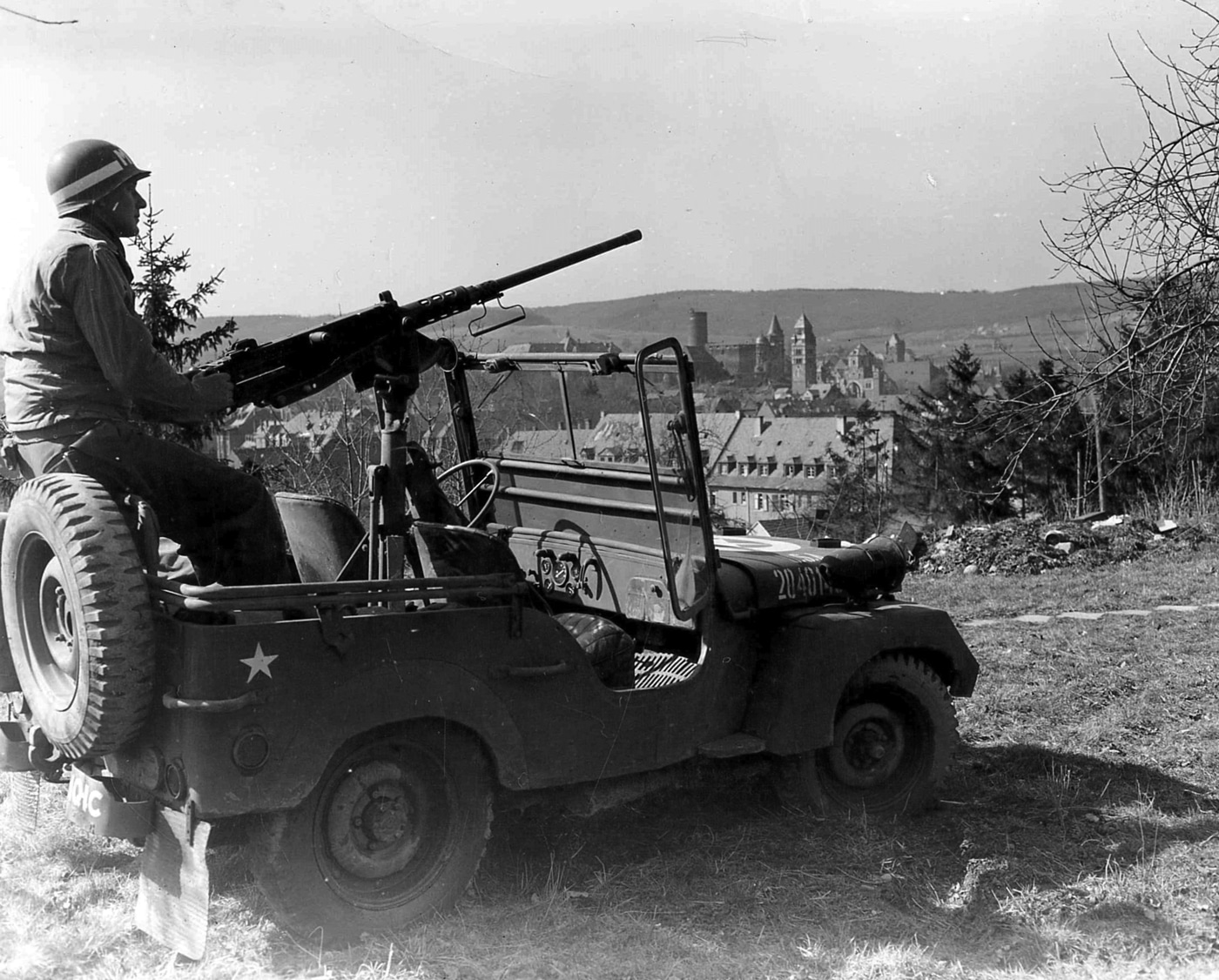
An MP mans an M2 machine gun mounted in a Jeep at the XII Corps, U.S. Third Army command post during World War II. In the background is Genovevaburg Castle. Image: NARA
Black Jack was having none of that.
The Ordnance guys tapped John Moses Browning, the greatest firearm designer in human history.
Just 15 months later, Browning was throwing big honking bullets downrange.
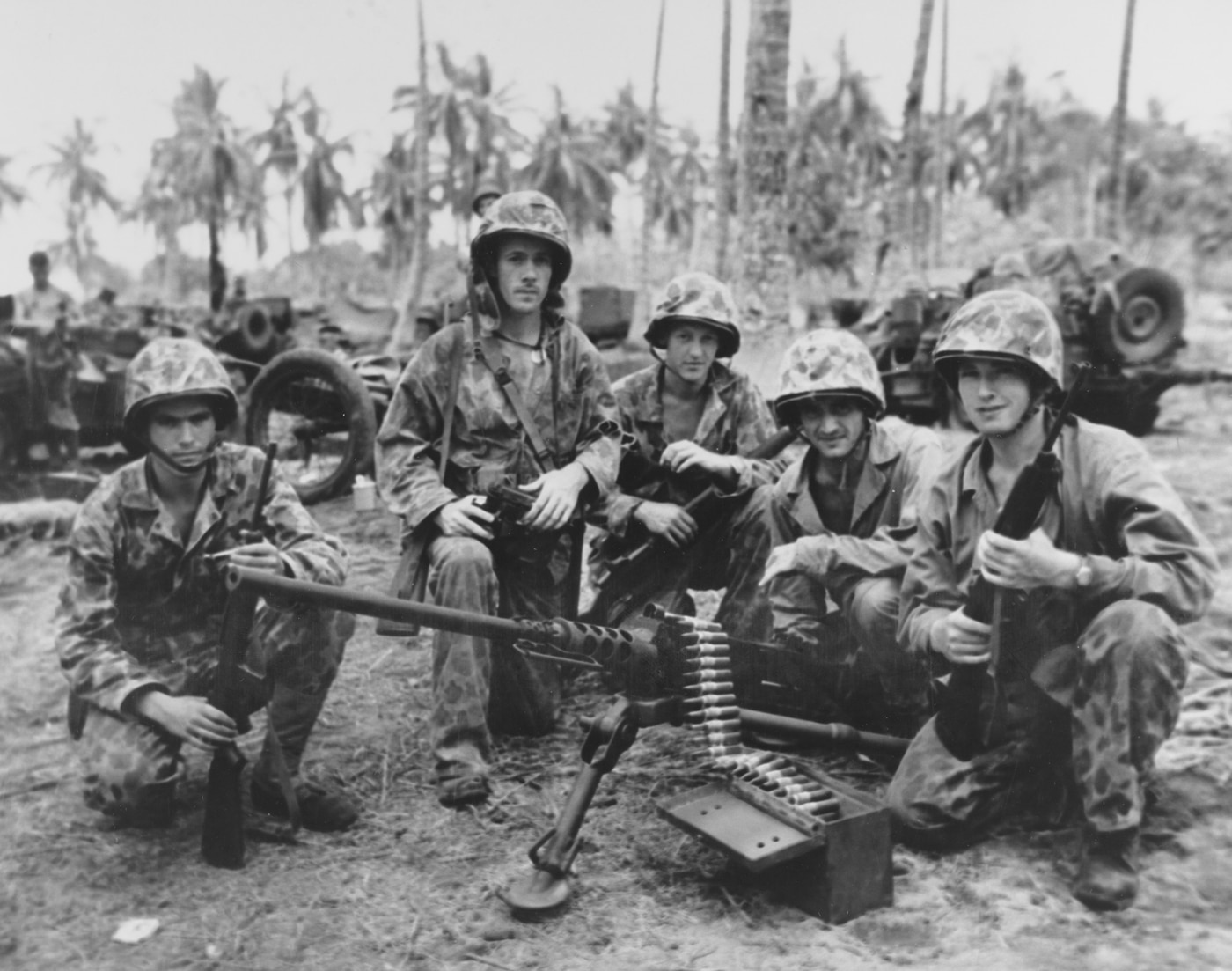
In November 1943, five Marines pose with a .50-caliber M2HB machine gun during the Bougainville Campaign in the Solomon Islands. Two men in foreground are holding M1 carbines. Image: U.S. Navy
Winchester designed the ammo.
The cartridge was simply a scaled-up version of the standard .30-06 Springfield service round.
However, that first .50-caliber machine gun fell short of the original velocity requirement by some 400 fps.
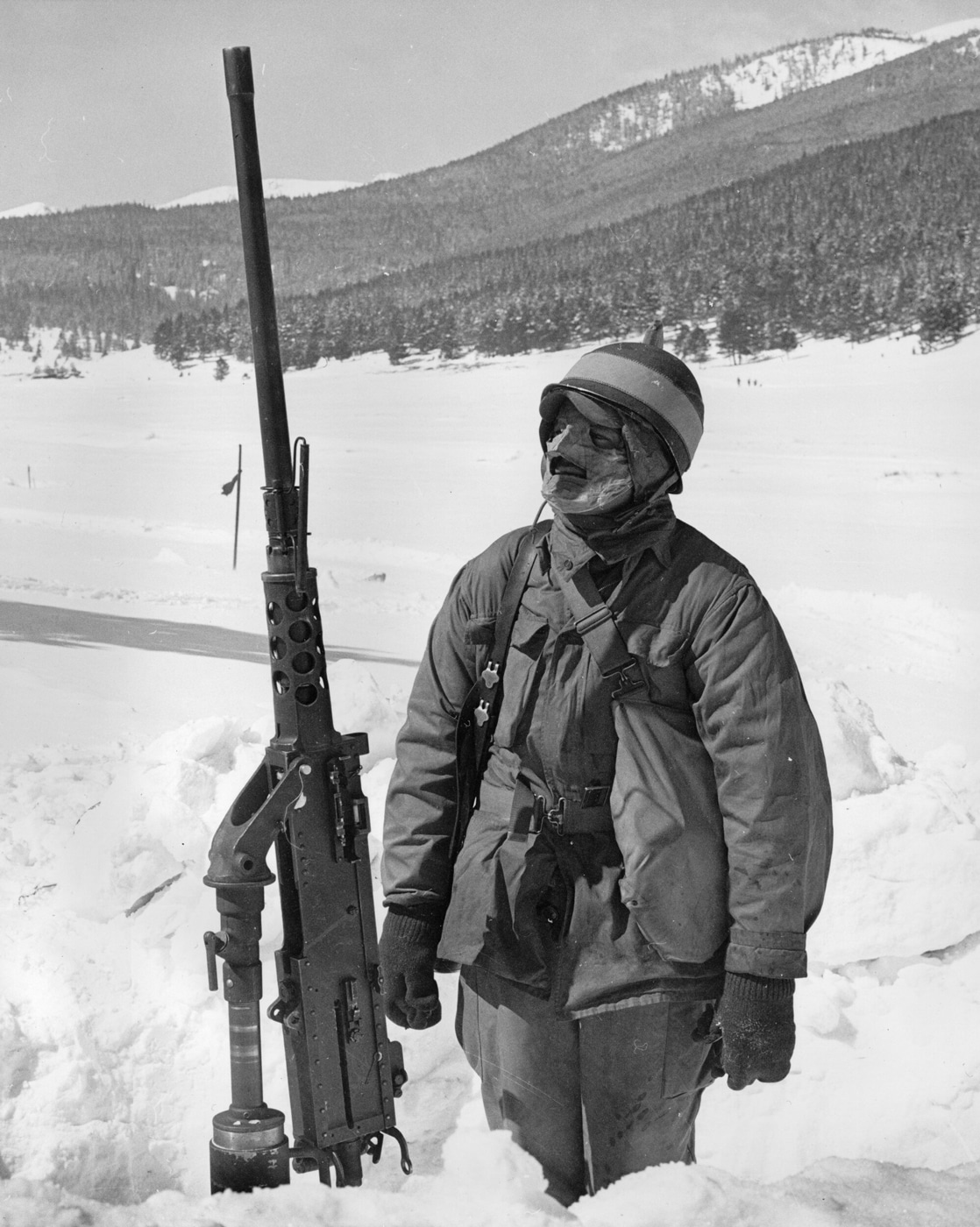
During World War II, Pvt. Barney Lane, a member of the 10th Infantry Division, is bundled up in the snow next to an M2 machine gun set up for air defense duties. Image: U.S. Army
Chambered for the 13.2x92mmSR cartridge, the T-Gewehr was a bolt-action, anti-tank rifle.
The new cartridge was the .50 BMG.
Those first .50 BMG chambered guns were the huge M1921 Browning machine guns water-cooled and bulky.
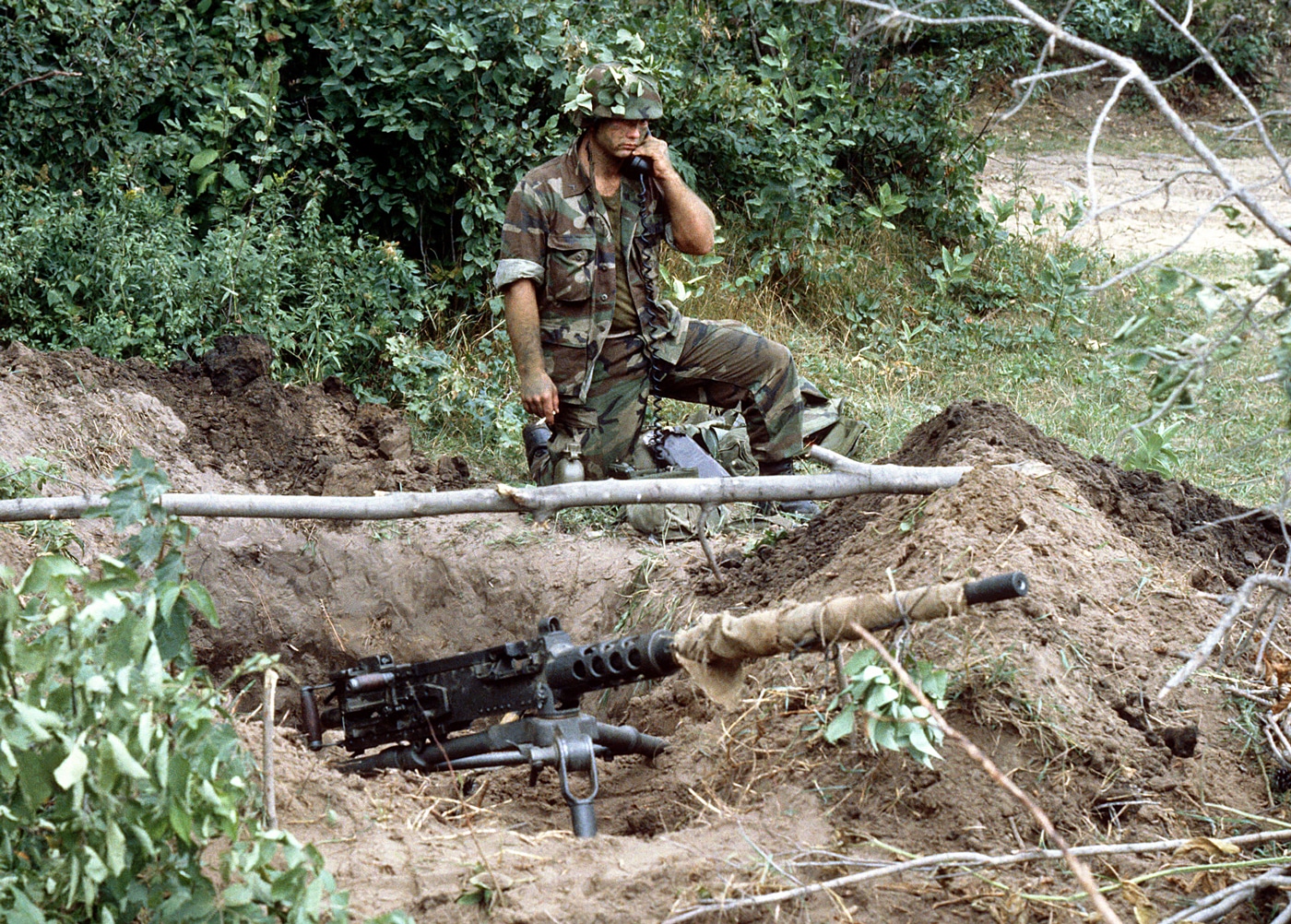
A Marine uses a field radio to receive instructions after constructing a machine gun nest for an M2 during training at Fort McCoy. Image: Cmdr. Frank Arlinghaus Jr./U.S. Navy
U.S. troops christened the big gun the Ma Deuce.
We have tried and failed for more than a century to find something better.
It was an accident.
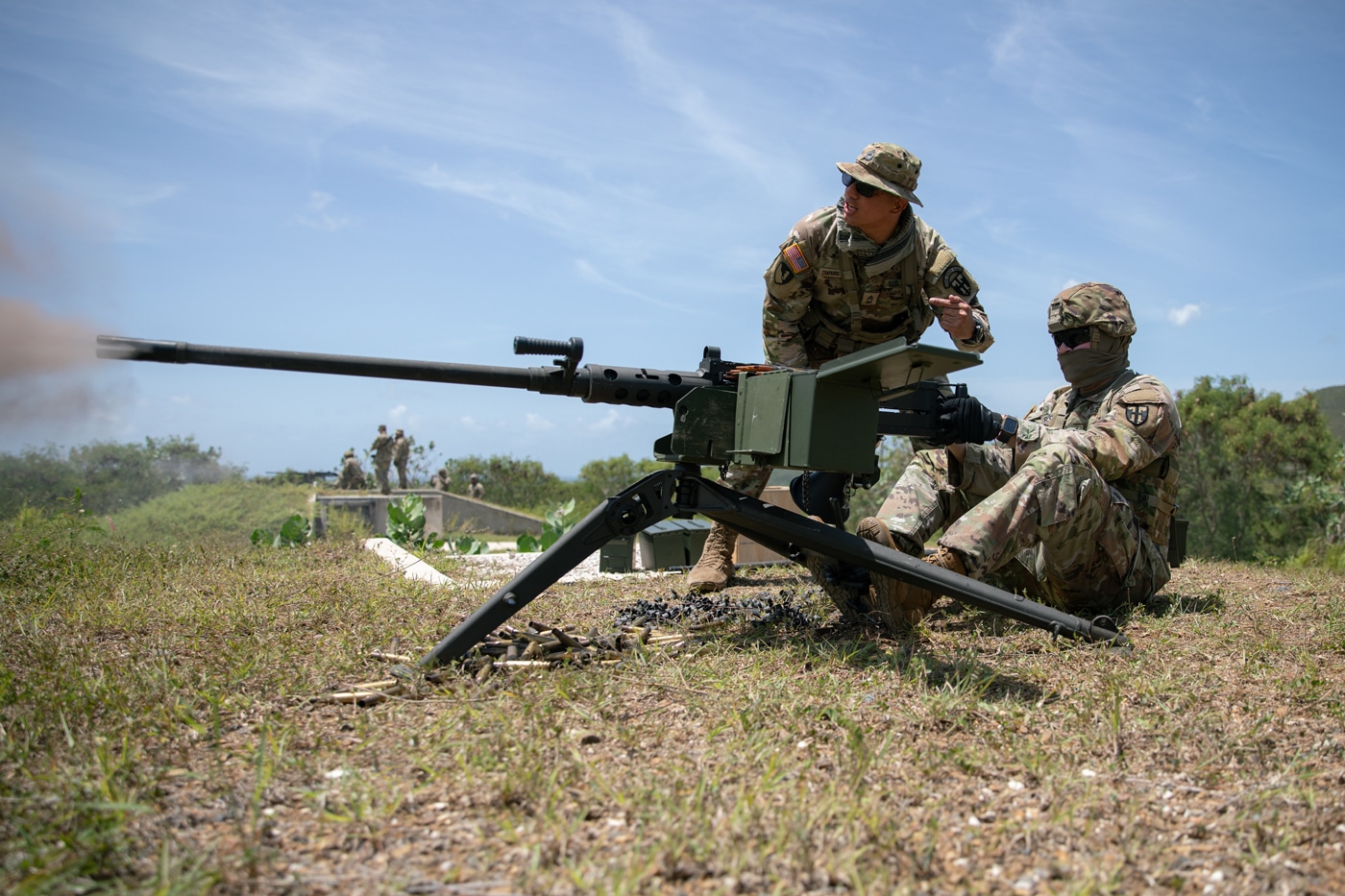
Soldiers of the Puerto Rico Army National Guard fire an M2 machine gun as part of their annual training at Camp Santiago Joint Training Center. Image: Spc. Felix Ortiz Rivera/U.S. Army National Guard
It makes me itch just a bit thinking about that even today.
The problem is that it is really tough to hide from that thing.
The M2 will punch through trees, cars, walls, and body armor with ease.
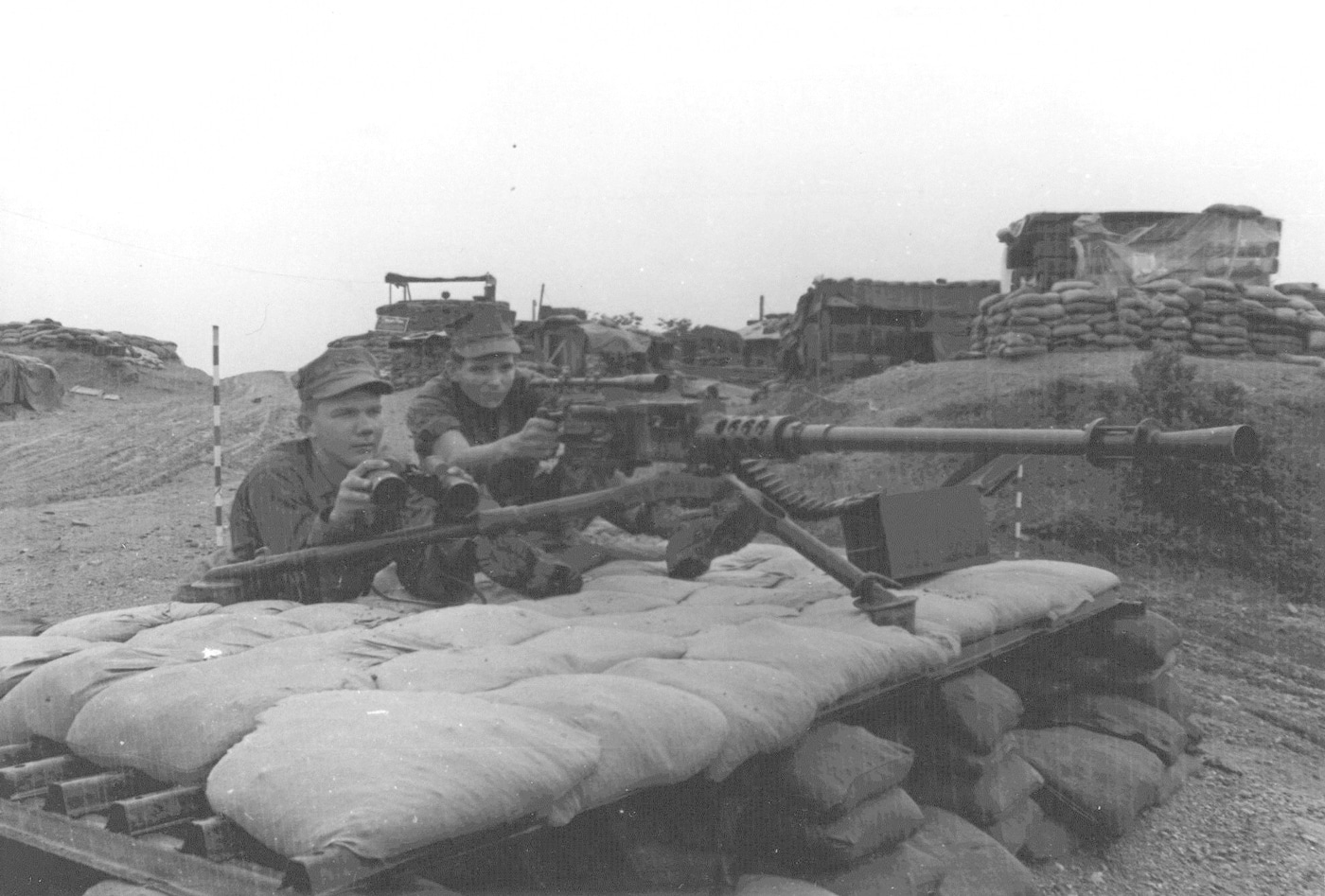
The M2 machine gun has been used for sniping as shown in this Vietnam War photograph. It had twice the effective range of the existing sniper rifles. Image: Lance Cpl. Steve Wyatt/U.S.M.C.
The guns range, reliability and penetration are what made the weapon so popular for so long.
Details on the M2
The belt-fed M2 .50-caliber machine gun is a short-recoil design.
That means the barrel and bolt remain locked together as a unit at the moment of firing.
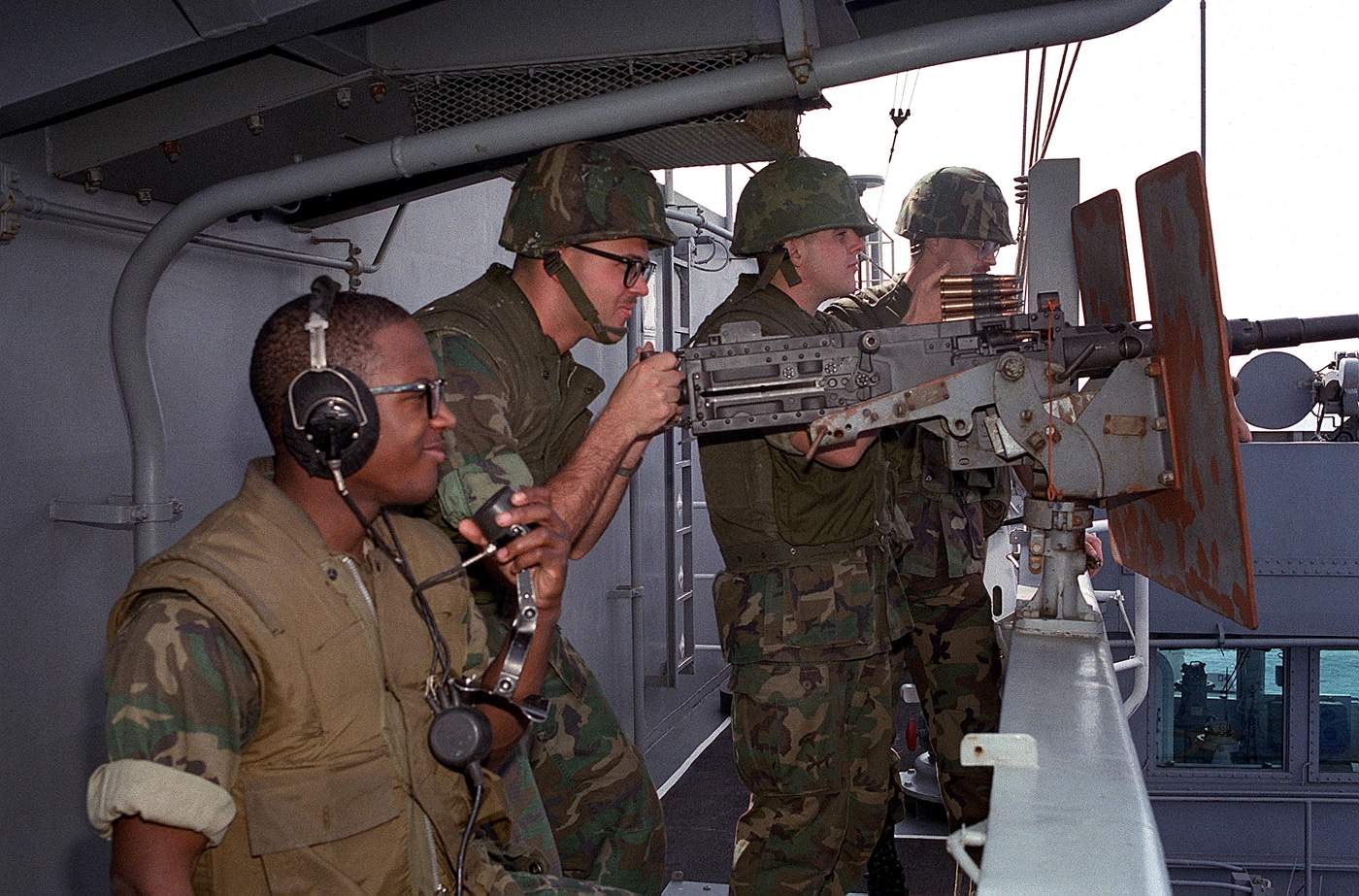
Members of the Marine detachment fire an M2 .50-caliber machine gun aboard the USSDwight D. Eisenhower(CVN 69). TheMighty Ikeis a nuclear-poweredNimitz-class carrier. Image: NARA
The gun fires from the closed bolt and can be easily swapped between left and right feed.
This feed conversion can be undertaken in minutes by a skilled operator.
The standard M2HB cycles between 450 and 600 rpm.
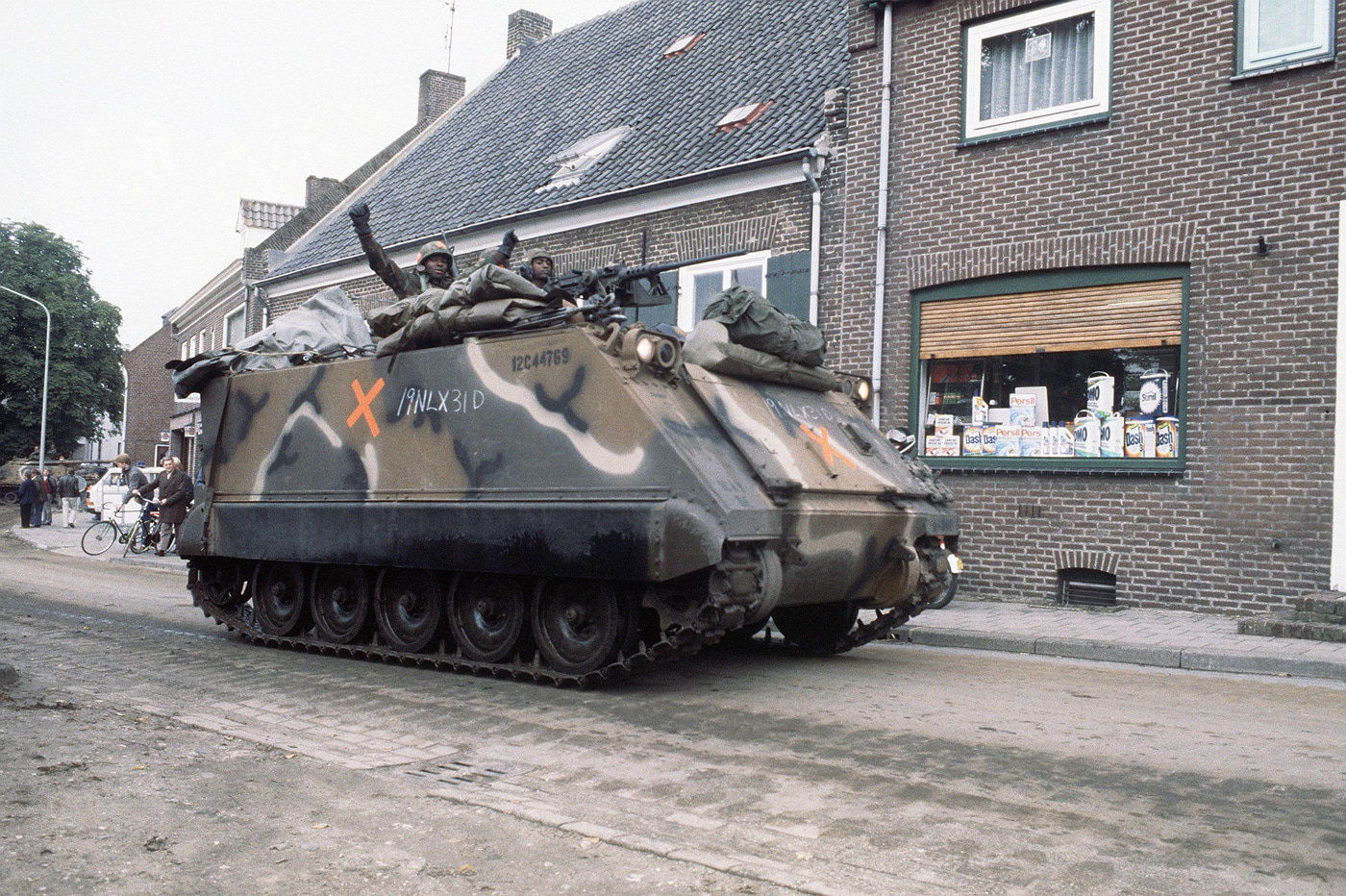
During Exercise Reforger, a 1st Cavalry DivisionM113 armored personnel carrierpasses through the town of Well after crossing the Meuse River in the Netherlands. The APC is equipped with an M2HB. Image: NARA
The AN/M2 is the aircraft version of the weapon with a lighter skeletonized bolt assembly.
This variant runs around 750 to 850 rpm.
The AN/M3 is a further evolution of the aircraft gun that features a rate of fire of 1,200 rpm.
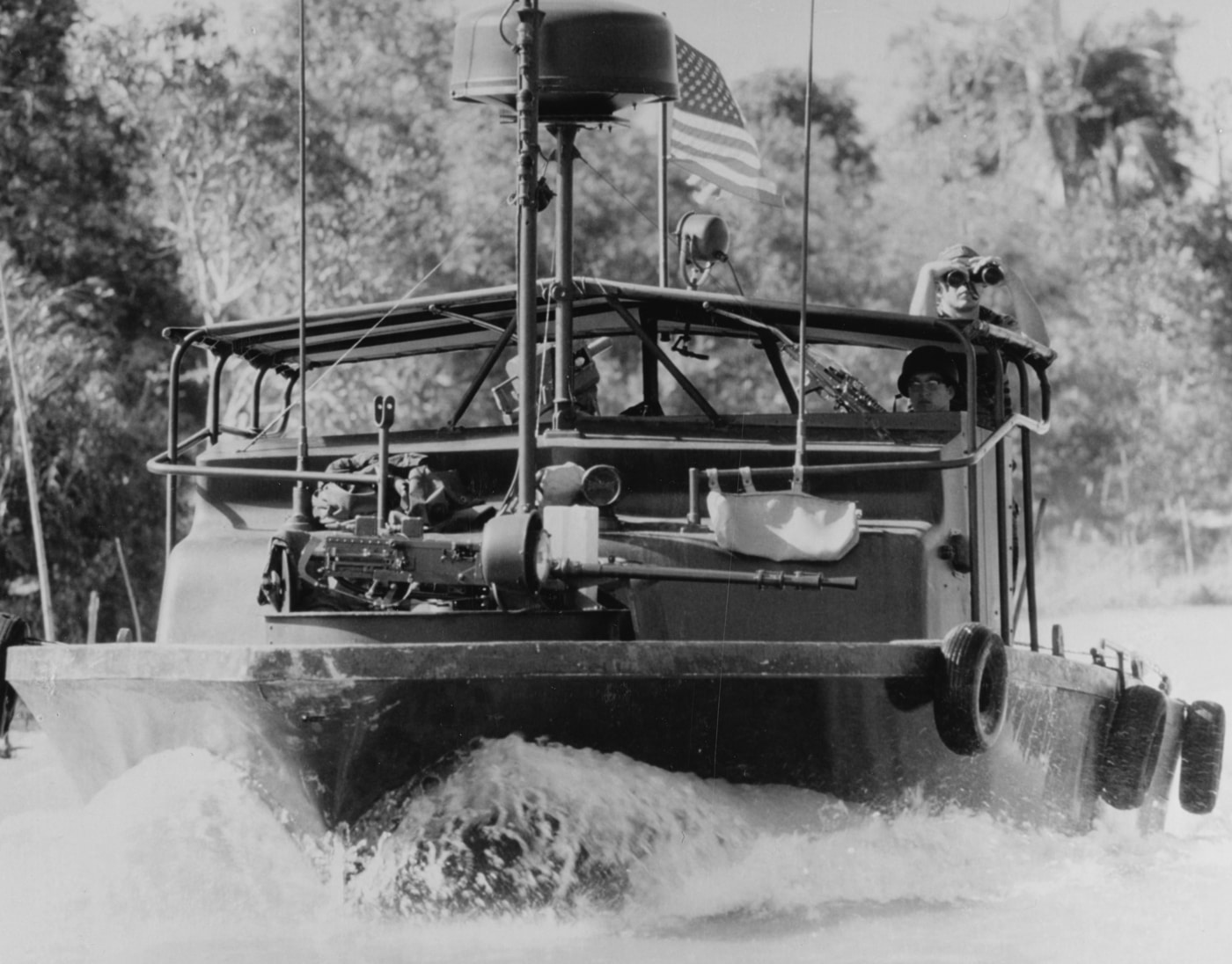
A crewman of a river patrol boat scans the river bank during patrol in Vietnam. A twin M2 machine gun is mounted on the boat. Image: D.S. Dodd/U.S. Navy
The standard M2HB weighs 84 lbs.
The corresponding M3 tripod is another 44 lbs.
The weapon fires via a characteristic spade grip with a butterfly trigger.
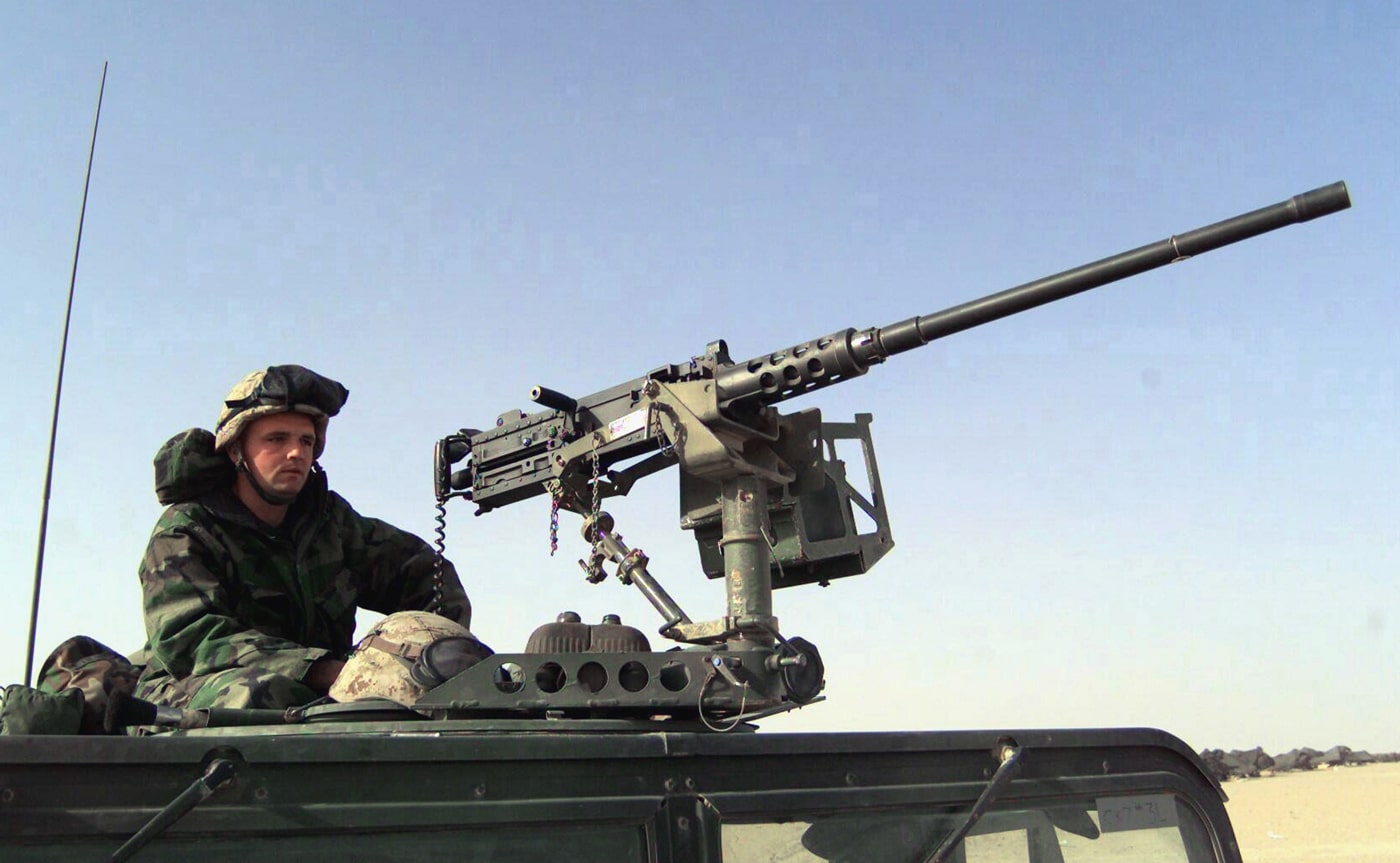
Sgt. Issac D. Sweeton of Weapons Company, 2nd Battalion, 6th Marines stands watch behind an M2 .50 caliber machine gun at landing strip Viper in support of Operation Iraqi Freedom. Image: NARA
The gun offers semi- or full-auto operation, though selecting that is not as straightforward as it might seem.
Curiously, the original M2HB lacks a manual safety.
An empty shell casing can be slipped underneath the butterfly trigger as an improvised field expedient.
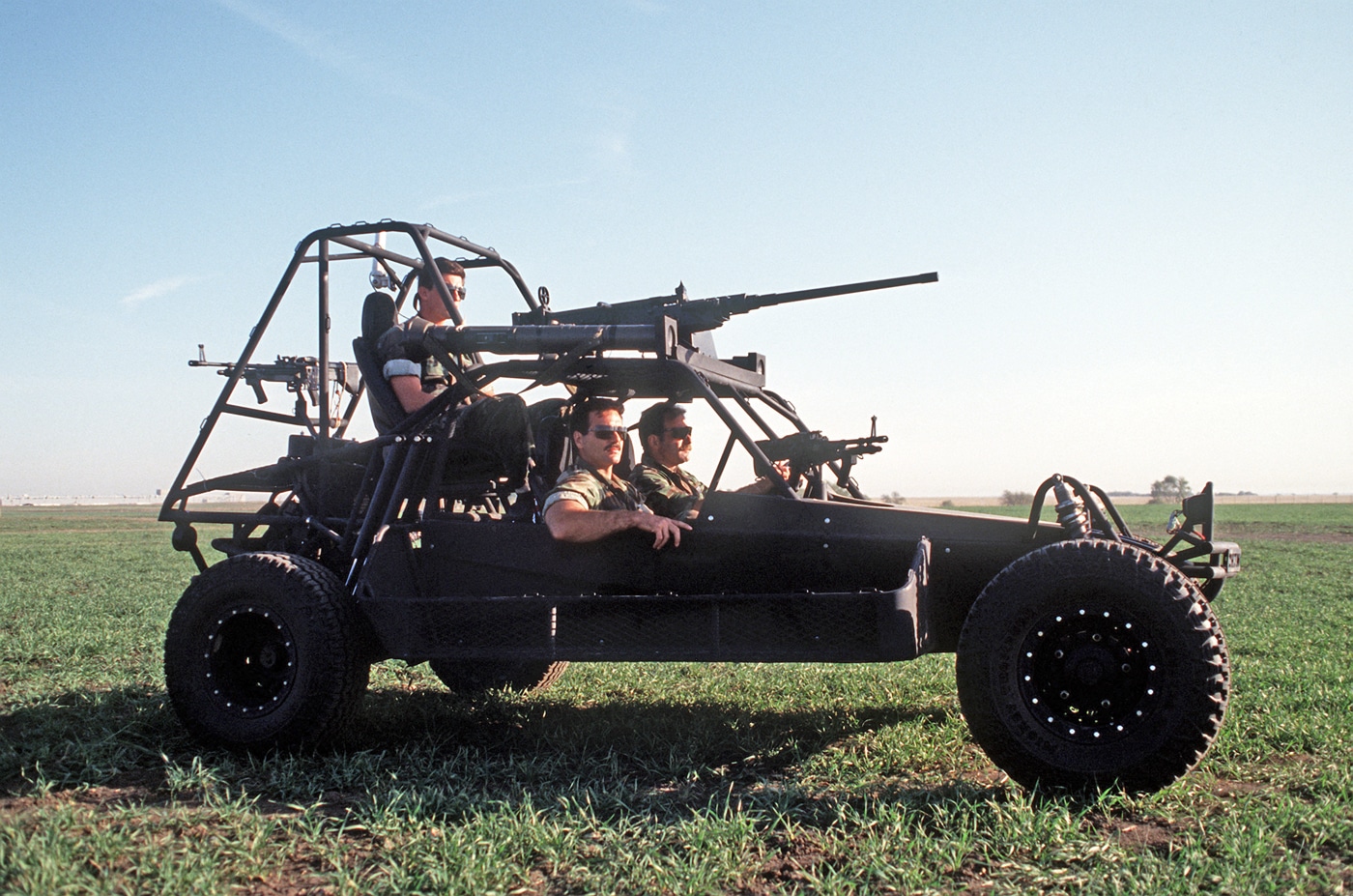
Three members of a U.S. Navy SEAL team sit in a Scorpion fast attack vehicle (FAV) later developed into the Desert Patrol Vehicle. Among its weapons is the M2 machine gun. Image: NARA
The M2HB has a published maximum effective range of 2,000 meters.
Standard ammunition boxes carry 100 rounds.
The M2 is arguably the most versatile machinegun ever created.
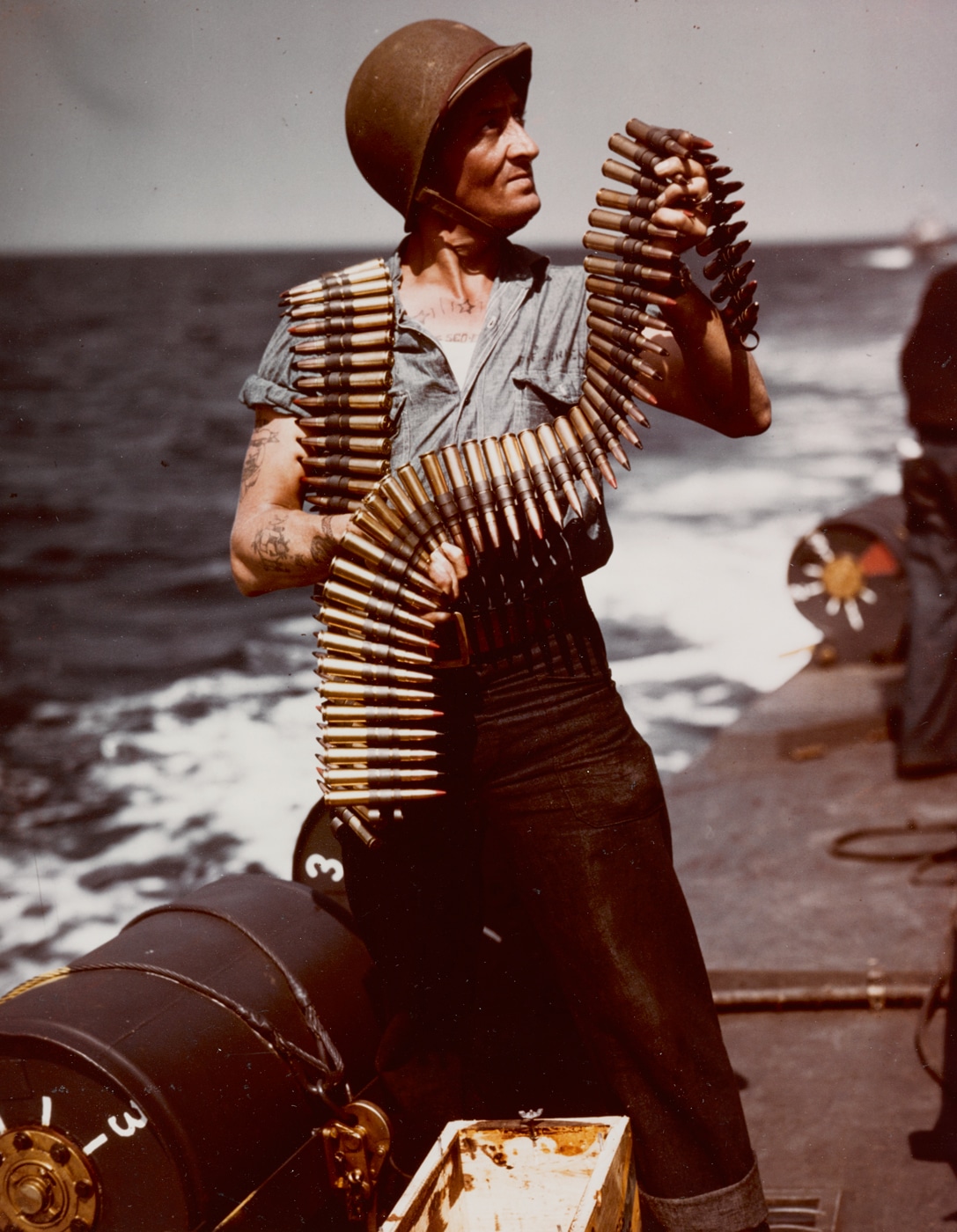
A sailor handles belts of .50 BMG ammunition on board a PT Boat during World War II. Bullet tips are colored to indicate type in a ratio of one red to three black. At left is a depth charge. Image: U.S. Navy
.50 BMG Ammunition
Standard M33 ball ammo pushes a massive 706.7-grain bullet.
M17 tracers, M8 armor-piercing Incendiary, and M20 armor-piercing incendiary-tracer rounds all have their applications.
bang out classified in 1993, the SLAP-T round pushes a .30-caliber tungsten penetrator that just will not stop.
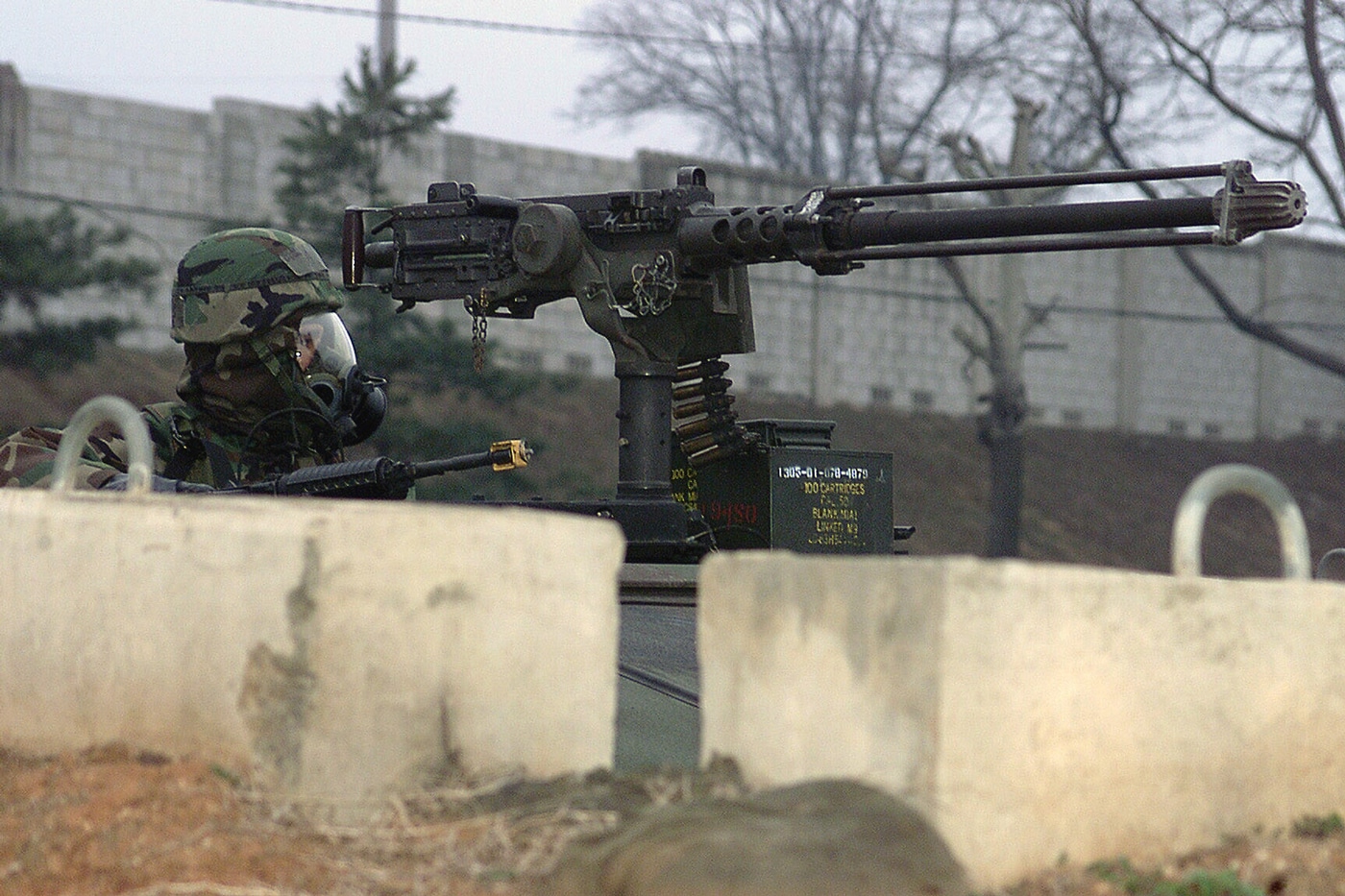
An airman wearing his MOPP protective gear during a drill at Osan Air Base, South Korea (ROK). The M2 machine gun is fitted with a blank firing adaptor. Image: Staff Sgt. Corey A. Clements/U.S. Air Force
Because the M2HB is recoil-operated, it requires a massive external contraption to reliably cycle blanks.
Applications
During World War II, American forces put the M2HB on most anything that moved.
In practice, troops typically remove the barrel to transform the gun itself into a two-man load.
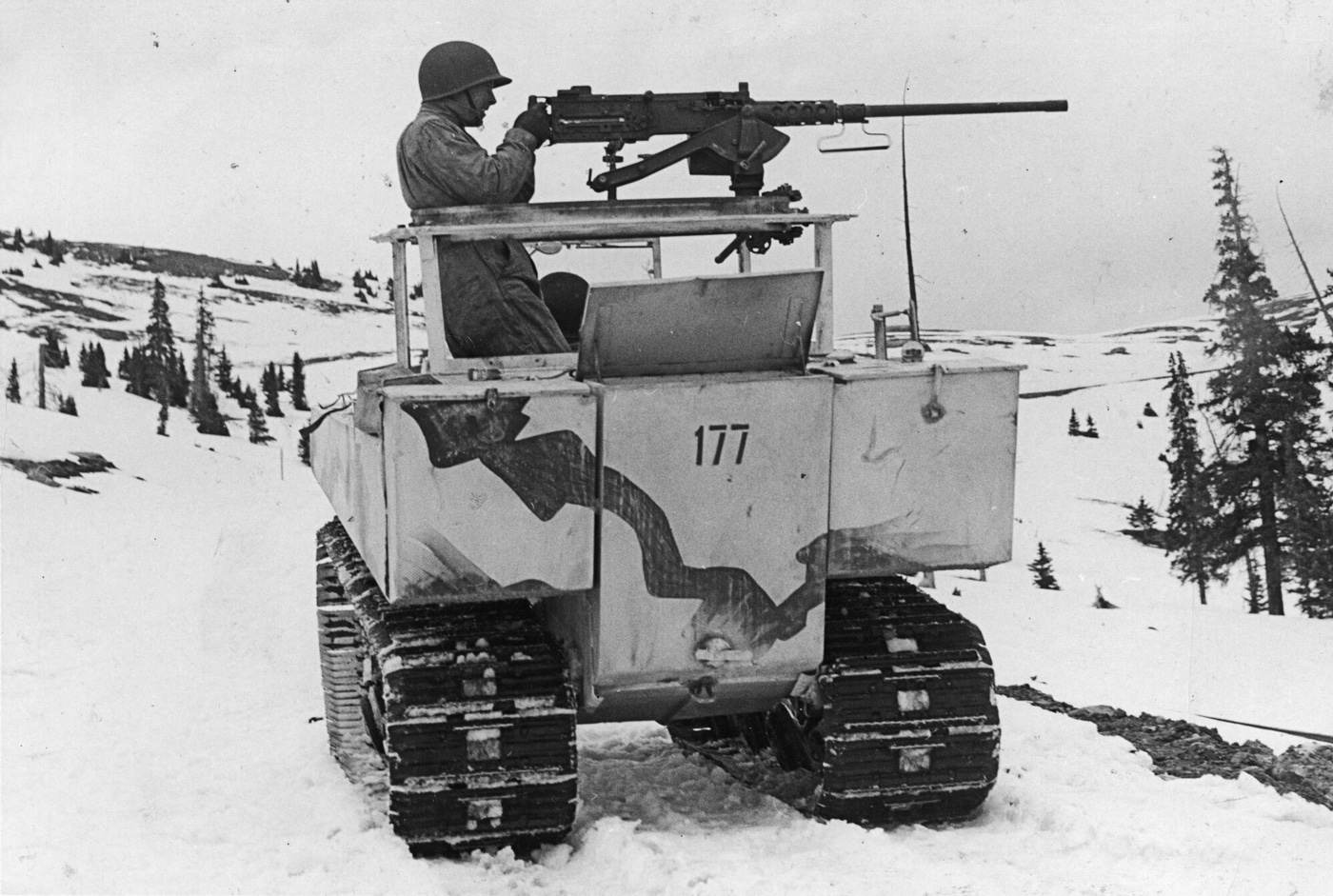
A 10th Mountain Division soldier stands in a tracked vehicle behind a mounted M2 .50-caliber machine gun. Image: NARA
Tank mountings in particular were nominally intended for anti-aircraft use.
WWII-vintage warships frequently bristled with the things for the same purpose.
Where the M2 really found its legs, however, was in airplanes.
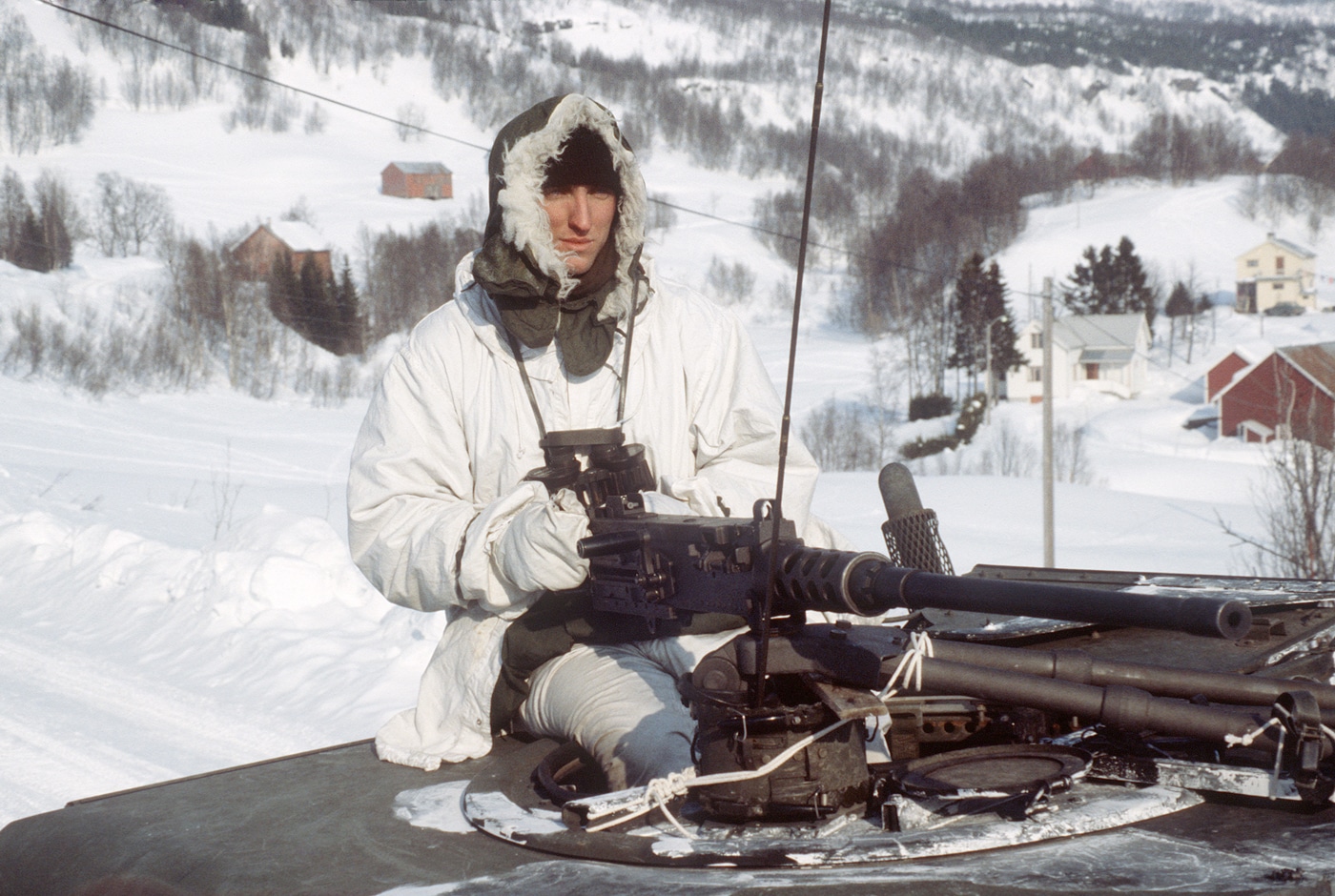
A Marine mans an M2 machine gun mounted on top of an M998 HMMWV (Humvee) during Operation Cold Winter in 1987. It was a NATO-sponsored military exercise in Norway. Cpl. J.D. Gonzales/NARA
This offered an aggregate rate of fire of 4,800 rounds per minute or 80 rounds per second.
The P-47 Thunderbolt carried eight of the guns, while theP38 Lightningsported four along with a Hispano 20mm cannon.
The F4F Wildcat used early in the war had four.
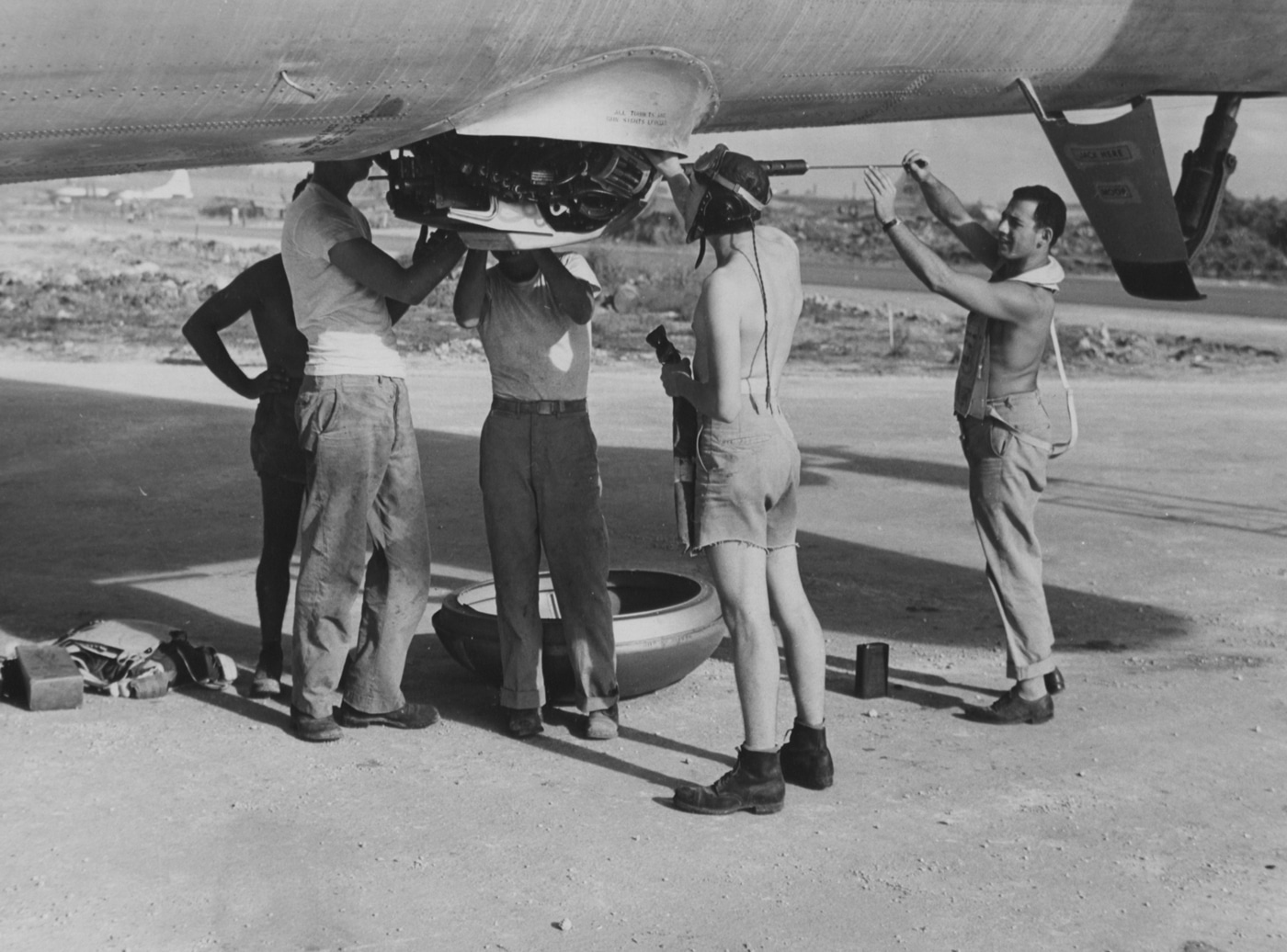
Sgt. William Gottfried (right) cleans his .50 caliber machine gun in the lower aft turret on a Boeing B-29 Superfortress after a bombing mission in November, 1944. Image: NARA
However, theP-51 Mustang,F6F Hellcat,P-40 Warhawk, andF4U Corsairall carried six.
Typical ammunition load was around 400 to 450 rounds per gun.
The massive strategic bombing campaign unleashed by the Allies on German industrial targets during WWII had a two-fold objective.
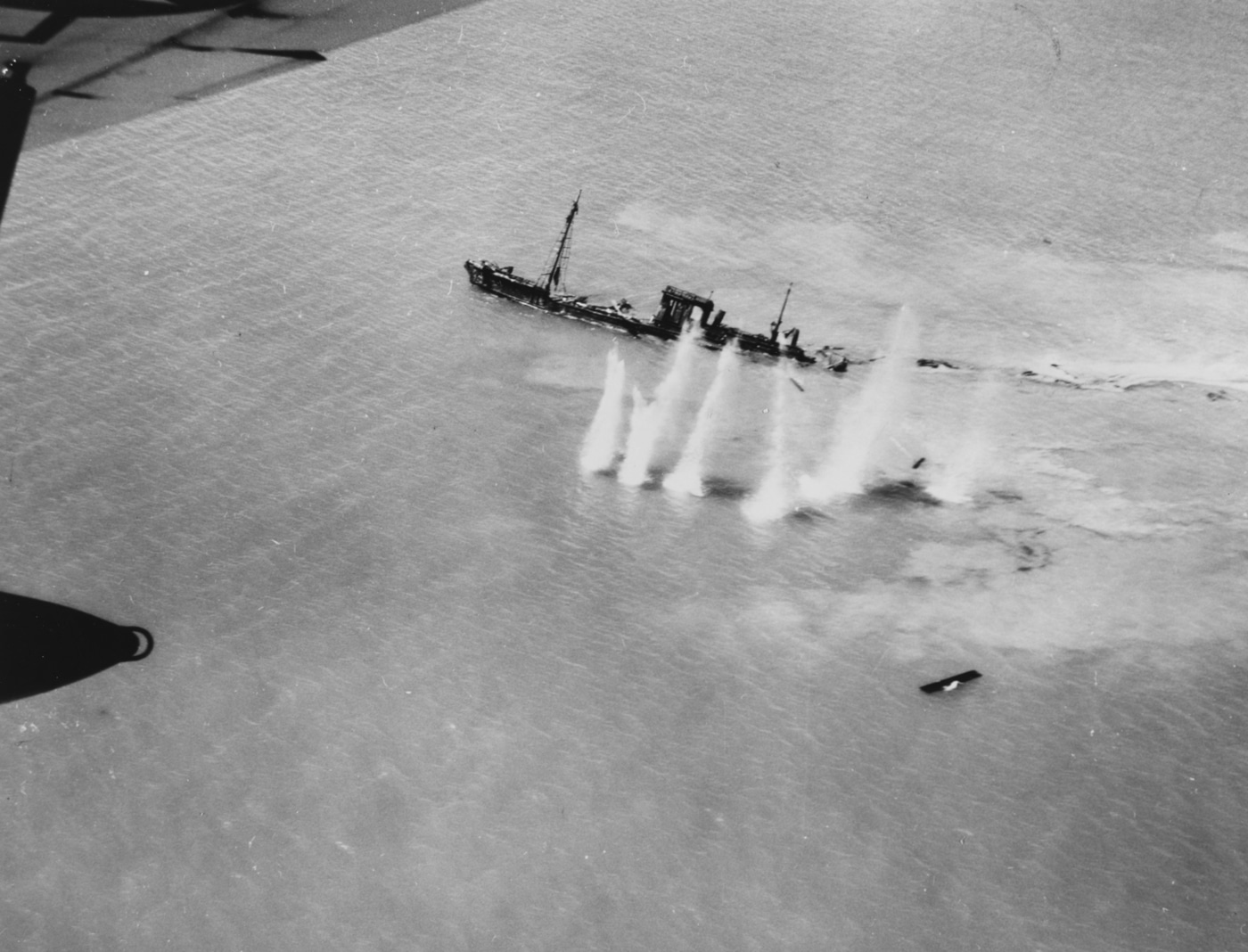
Employing AN/M2 machine guns, aMartin PBM Marinerattacks a small Japanese cargo vessel off the coast of China in 1945. The Mariner was based with USSChandeleur(AV-10). Image: U.S. Navy
The first was to castrate German industry and, in so doing, hamper the Axis war effort.
The second, and equally important, was to kill German fighter pilots.
The primary weapon used to accomplish that second goal was the AN/M2 .50-caliber machinegun.
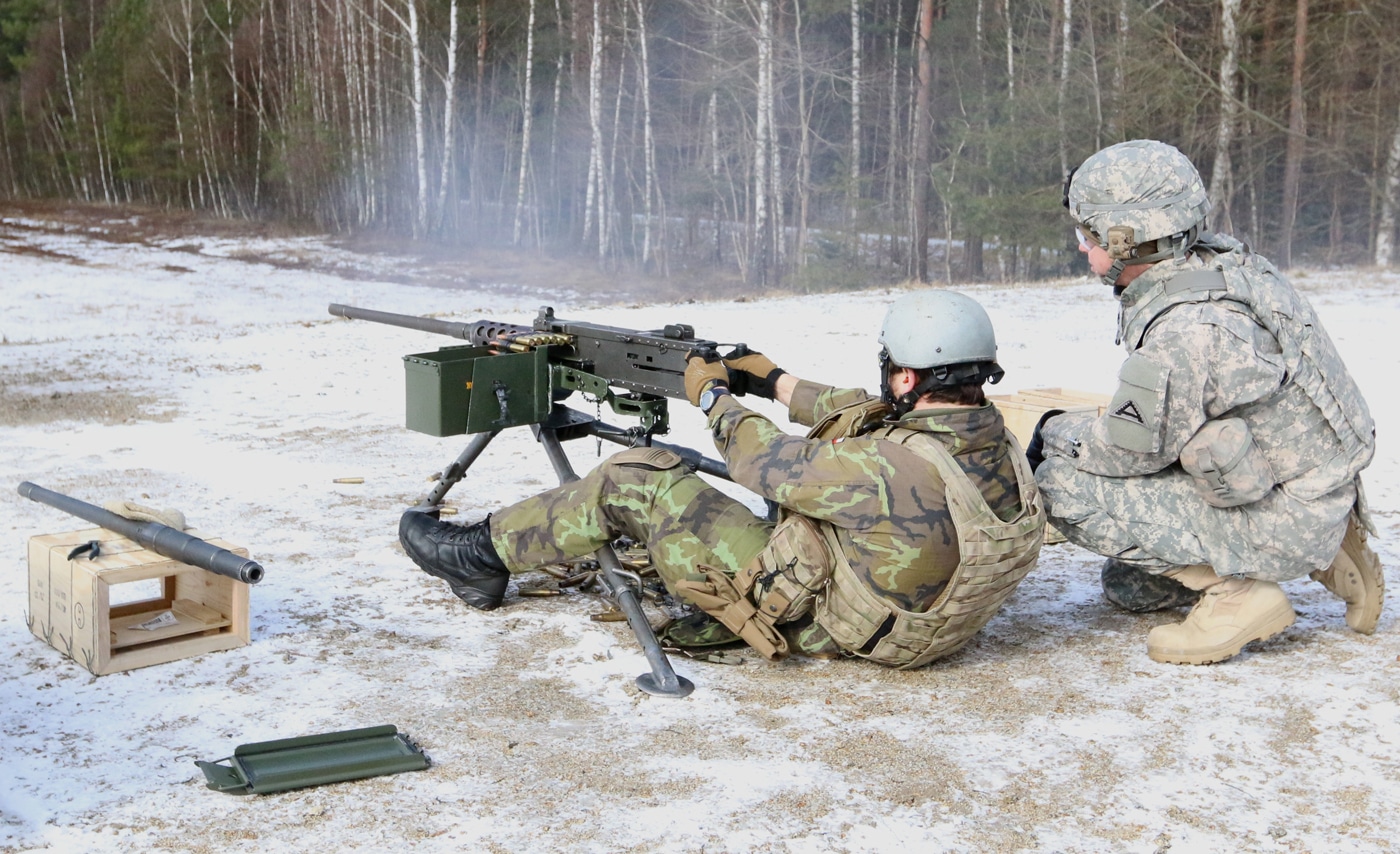
A soldier of the Czech Republic fires an M2 machine gun at a Weapons Familiarization Course in Grafenwoehr, Germany. Image: Sgt. Kenneth D. Reed/U.S. Army
Late-model B-17G Flying Fortresses carried 13 of the big guns in a combination of powered turrets and free mounts.
The B-24J Liberator sported ten.
One unnamed German pilot likened attacking American bomber formations to copulating with a porcupine.
In 2010 the Army introduced the M2A1.
This improved M2HB features fixed headspace and timing along with a quick-change barrel system.
Uncle Sam undertook this conversion on all 54,000 M2s in the current U.S. Army inventory.
The Marines did the same with their 3,600 weapons.
The Israelis followed suit as well.
Supply trucks and self-propelled artillery pieces all feature the obligatory .50-caliber up top as well.
The M2HB is Americas machine gun.




